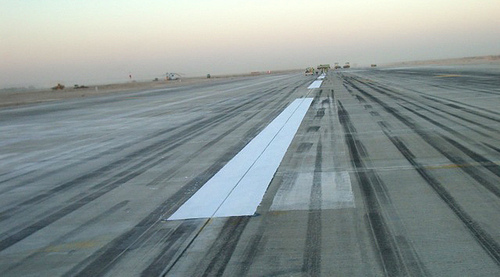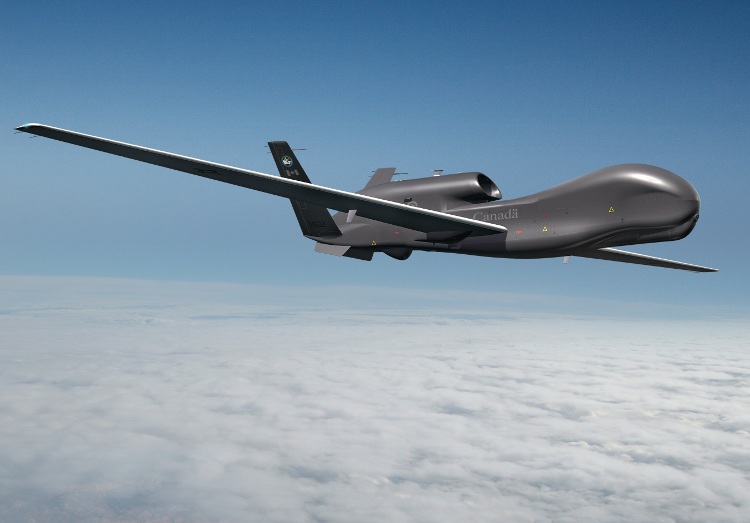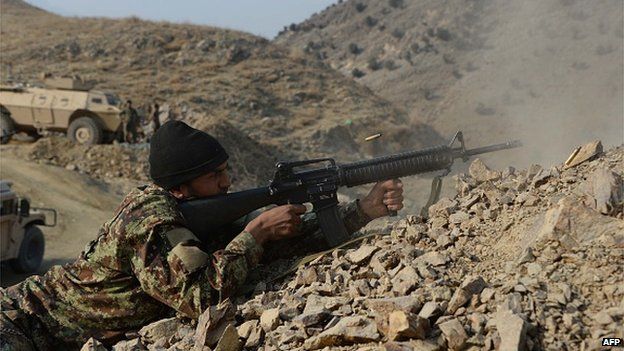Having suffered the greatest losses of troops and equipment over thirteen years of war in Afghanistan, and as the last NATO contributor to withdraw combat troops from the country, the US’ withdrawal remains a top priority for US military planners. Now in full swing, the US military is pursuing numerous withdrawal strategies, the extraordinary costs of which inevitably provoke dialogue among military planners, civilian bureaucrats, and academics as to their economic feasibility. It logically follows that attempting to withdraw personnel and equipment within explicit economic bounds necessarily limits the scope and scale of withdrawal strategies at the US military’s disposal. At this point, the US military is at a critical juncture. In cases where it is economically insensible to transport certain equipment stateside or to other worldwide US bases, the equipment can either be transferred to regional buyers or destroyed in place.
[captionpix align=”left” theme=”elegant” width=”300″ imgsrc=”http://natoassociation.ca/wp-content/uploads/2014/03/koy2013020400033.jpg”]
U.S. Brigadier-General Steven Shapiro stated that as of January 2014, around 400 bases out of a high of around 800 in October 2013 have been successfully closed or transferred to Afghan authorities as part of a withdrawal of foreign troops from combat operations winding up in 2014. Far-flung forward operating bases located across Afghanistan are also undergoing rapid deconstruction in anticipation of the impeding US withdrawal.
With regards to equipment, US Army representatives stated that approximately 40,000 containers and 30,000 vehicles have already been shipped back to the US from Afghanistan since late 2012, attributed to the tireless efforts of dedicated US military personnel and private contractors. US Army Lieutenant-Colonel Richard Clifton also stated that while it is possible to bring back the remaining 80,000 containers and 20,000 vehicles still in Afghanistan by December 2014, prohibitive costs preclude such a course of action. For instance, the United States Marine Corps (USMC) anticipates that shipping a single Mine Resistant Ambush Protected vehicle (MRAP) back to the US and performing necessary repairs will cost between $250,000 and $300,000 USD. With roughly 11,000 MRAPs in Afghanistan, returning them all to the US or to other worldwide US bases is too expensive to contemplate, according to Pentagon officials.
The US’ withdrawal of materiel from Afghanistan is further complicated by various interacting factors such as Afghanistan’s geography, weather, and diplomatic tensions with neighboring Pakistan. Afghanistan is landlocked, thus requiring the US to first transport its military equipment by road to Pakistan where it can be subsequently shipped from the port of Karachi to the US or elsewhere. Sea-borne transport remains the most economical withdrawal strategy, especially given the US military’s colossal accumulation of equipment in Afghanistan.
In 2010 and 2011, Pakistan enforced border closures with Afghanistan in retaliation for US drone strikes in Pakistan. While the Afghan-Pak border has since been reopened, the US must carefully negotiate tensions with Pakistan to avoid repeated border closures. Land transport of materiel to the port of Karachi is also weather-dependent, with crucial land transport arteries inaccessible during winter months. While it is possible for the US military to transport equipment via strategic airlift, this option is prohibitively expensive.
The pullout of more than $60 billion worth of war-fighting equipment, some pieces taking weeks to ready for transport, paired with border closures and other limitations, poses significant distractions for military personnel engaged in ongoing combat and training operations. The withdrawal from Afghanistan is expected to be one of the most costly and complicated exercises the US military has undertaken, and certainly more difficult than the military withdrawal from Iraq. The latter withdrawal was simplified by Iraq’s proximity to neighboring allied states, such as Kuwait and Saudi Arabia, to which the US could transport materiel for subsequent sea-borne shipment.
[captionpix align=”left” theme=”elegant” width=”300″ imgsrc=”http://natoassociation.ca/wp-content/uploads/2014/03/1128695027.jpg”]
In consideration of the many economic and logistical determinants shaping the US’ withdrawal from Afghanistan, there are viable alternative strategies for shipping equipment stateside. For example, through the foreign military sales (FMS) program, the US could relinquish some military equipment by transferring it to allied and friendly states in the Middle East. US military equipment could be transferred to the Afghan National Security Forces to bolster their effectiveness in future counterinsurgency missions, or otherwise be provided to US allies such as Saudi Arabia, Kuwait, and the United Arab Emirates. There is always the risk however that such military equipment may ultimately be illegally diverted or captured by insurgent or unfriendly forces.
Such risks are weighed against the pressing need to withdraw US combat forces and equipment in a timely manner, and certainly factor into the risk assessments undertaken by the US Department of State, which retains export authority for sophisticated defense technology. Although a lengthy process carrying potential long-term security risks, FMS remains a viable option for the US to mitigate military withdrawal costs. Where the US is unwilling to leave military equipment in Afghanistan or transfer it to regional buyers, due to risks to US interests, the US may simply choose to destroy the equipment in place.




